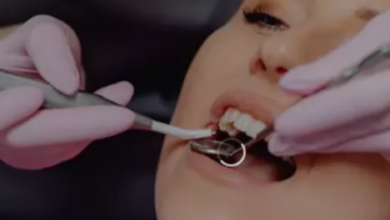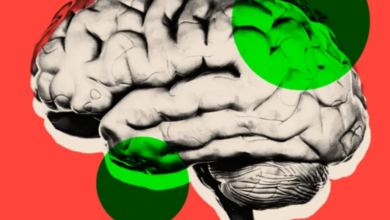Exploring the World of Treatment Centers
Treatment centers play a crucial role in supporting individuals struggling with various health issues, offering a structured and professional environment for recovery. In this comprehensive guide, we will delve into the diverse landscape of alcohol treatment centers in alberta, addressing the different types, the selection process, the treatment journey, and the associated benefits.
Table of Contents
I. Introduction
A. Definition of Treatment Centers
Treatment centers, also known as rehabilitation centers or clinics, are facilities designed to provide specialized care and support for individuals facing health challenges. These challenges can range from addiction and mental health disorders to physical rehabilitation needs.
B. Importance of Seeking Help
Acknowledging the need for assistance is the first step towards recovery. Treatment centers offer a safe space for individuals to address their issues, providing a supportive and healing environment.
C. Overview of Different Types of Treatment Centers
Before delving into the details, let’s explore the various types of treatment centers available, each catering to specific needs and circumstances.
II. Types of Treatment Centers
A. Inpatient Treatment Centers
Inpatient treatment centers, often referred to as residential facilities, require individuals to reside on-site during their treatment. This immersive approach ensures round-the-clock care and support.
B. Outpatient Treatment Centers
Outpatient treatment centers allow individuals to receive care while maintaining their daily routines. This flexibility is suitable for those with less severe conditions or other commitments.
C. Specialty Treatment Centers
Specialty treatment centers focus on specific health issues, such as addiction or trauma. These centers often employ specialized professionals to address the unique needs of their clients.
III. Choosing the Right Treatment Center
A. Assessing Individual Needs
Personalization is key when selecting a treatment center. Understanding individual requirements and preferences ensures a better fit for effective treatment.
B. Researching Accreditation and Reputation
Reliable treatment centers adhere to industry standards and possess accreditations. Researching the reputation and success rates of a facility provides valuable insights.
C. Considering Location and Environment
The environment plays a crucial role in the recovery process. Some individuals may find solace in serene landscapes, while others may prefer a bustling urban setting. Consideration of location is vital.
IV. The Treatment Process
A. Initial Assessment
Upon admission, individuals undergo a thorough assessment to determine the most appropriate treatment plan. This initial step sets the foundation for personalized care.
B. Detoxification Phase
For those dealing with substance abuse, a supervised detoxification phase is often necessary. This process helps cleanse the body of harmful substances under medical supervision.
C. Therapy and Counseling Sessions
Therapy and counseling form the core of treatment. Individual and group sessions, along with various therapeutic approaches, aim to address underlying issues and foster healing.
D. Aftercare and Support
The journey doesn’t end with treatment completion. Aftercare programs and ongoing support play a vital role in preventing relapse and supporting individuals in their transition back to daily life.
V. Benefits of Treatment Centers
A. Professional Medical Supervision
Treatment centers are staffed with qualified professionals, including doctors, therapists, and nurses, ensuring individuals receive the highest level of medical care.
B. Structured and Supportive Environment
The structured environment of treatment centers provides routine and stability, essential components for recovery. Supportive staff further enhances the healing process.
C. Access to Diverse Therapies
Treatment centers offer a range of therapies, from traditional approaches to holistic and innovative methods, catering to diverse individual needs.
VI. Common Misconceptions
A. One-Size-Fits-All Approach
Contrary to popular belief, treatment centers recognize the uniqueness of each individual’s journey. Personalized care plans debunk the one-size-fits-all myth.
B. Only for Severe Cases
Treatment centers accommodate individuals at various stages of their struggles, not solely those with severe conditions. Early intervention is often encouraged for better outcomes.
C. Lack of Confidentiality
Confidentiality is a top priority in treatment centers, fostering an environment where individuals can open up without fear of judgment or breach of privacy.
VII. Success Stories
A. Real-Life Testimonials
Real-life success stories highlight the transformative power of treatment centers, showcasing individuals who have overcome adversity and rebuilt their lives.
B. Overcoming Challenges Through Treatment Centers
Individuals share their challenges and how treatment centers provided the necessary tools and support to overcome obstacles.
C. Transformative Journeys to Recovery
A glimpse into the transformative journeys individuals experience within the safe and nurturing confines of treatment centers.
VIII. Challenges and Solutions
A. Stigma Surrounding Treatment Centers
Addressing the stigma associated with seeking help is crucial. Education and awareness campaigns aim to break down barriers and promote understanding.
B. Financial Barriers
Financial constraints should not hinder access to treatment. Various centers offer financial assistance programs, ensuring support is available to all.
C. Addressing Relapse Concerns
Relapse is a part of many recovery journeys. Treatment centers focus on developing robust coping mechanisms and ongoing support to minimize the risk of relapse.
IX. Emerging Trends in Treatment Centers
A. Integrative Therapies
Holistic approaches, combining traditional and alternative therapies, are gaining popularity for their comprehensive impact on overall well-being.
B. Holistic Approaches
The integration of mind, body, and spirit in treatment plans recognizes the interconnected nature of health, fostering holistic well-being.
C. Technological Advancements
Advancements in technology, such as telehealth services and virtual reality therapy, are enhancing accessibility and effectiveness in treatment centers.
X. Conclusion
A. Recap of the Importance of Treatment Centers
Treatment centers play a pivotal role in empowering individuals to reclaim their lives, fostering healing, and providing the necessary tools for long-term recovery.
B. Encouragement for Seeking Help
Encourage readers to prioritize their well-being and seek help when needed. Taking the first step towards recovery is a brave and transformative decision.
C. Final Thoughts on Recovery and Hope
Highlight the potential for positive change and growth through the support and guidance offered by treatment centers, leaving readers with a sense of hope.






